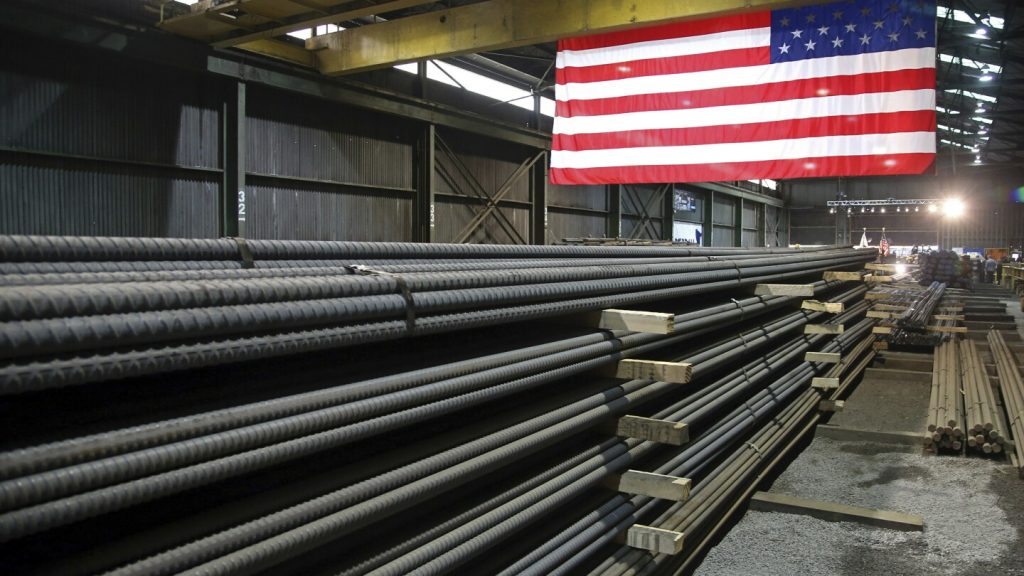President Trump’s Tariff Rollout: Small Business Owners Feel the Pinch
President Donald Trump’s ongoing implementation of a wide array of tariffs is causing significant concern among small business owners, many of whom are already struggling with tight profit margins. On Monday, Trump announced a 25% tariff on steel and aluminum, and promised more import duties to come. Just last week, his administration imposed a 10% tariff on Chinese goods entering the U.S. For Sandra Payne, the owner of Denver Concrete Vibrator, this news is particularly devastating. Her company imports steel and other raw materials, essential for manufacturing tools used in settling concrete and other industrial applications. Payne sources most of her steel from China, along with materials from Canada and Mexico.
Tight Margins and Rising Costs
"Small businesses run on very small margins. And so a 25% increase in any product is going to hurt," Payne explained. "And we can’t just raise our prices every time the cost goes up to us. So we are losing a lot of money." The strain on her profit margins is not unique; many small businesses are facing similar challenges. The tariffs add an additional layer of financial pressure, forcing owners to reassess their strategies and consider cost-cutting measures or alternative suppliers. The uncertainty surrounding the tariffs is making it difficult for these businesses to plan for the future, as they are unsure of the exact timing and extent of the price hikes.
Implications for Cross-Border Trade
Julie Bednarski-Malik, who runs Healthy Crunch, a snack company based in Mississauga, Ontario, is also feeling the heat. Her products are sold in both Canadian and U.S. retail stores, and the looming tariffs are causing her to consider whether she will need to raise prices. "I know that this is going to come into effect, but we’re still unclear exactly the timing and the percentage and what sort of commodities are going to be impacted," she said. Bednarski-Malik hopes that a resolution can be found between the U.S. and Canada, given their long-standing close alliance and robust trade relationship. The ambiguity in the tariff policies is creating a sense of unease, as business owners are left to speculate about the potential impact on their operations and pricing strategies.
Specific Concerns and Industry Impacts
Bar Zakheim, the owner of Better Place Design & Build, a contracting business in San Diego, is particularly worried about the tariffs on lumber. His company specializes in building accessible dwelling units (ADUs) and has seen the cost of lumber rise over the past few years due to supply chain disruptions and wildfires. "These tariffs are going to make everything we do considerably more expensive, at a time when the high-priced housing market and high interest rates are already cutting into our bottom line," Zakheim stated. The combination of these factors is making it increasingly difficult for his business to remain competitive and profitable. The lumber industry, which is heavily reliant on imports from Canada, is especially vulnerable to the negative effects of these tariffs.
The Domino Effect of Tariffs
Payne’s concerns extend beyond her own business. "I sell to other businesses, I don’t sell to the end user. So everything that happens to me is going to happen all the way down the line. It’s going to impact everyone down the line," she emphasized. This domino effect highlights the interconnected nature of the supply chain, where increased costs for one business can have ripple effects throughout the entire industry. Small business owners like Payne and Zakheim are not only grappling with their own financial challenges but are also worried about the broader economic impact on their customers and the market as a whole. The tariffs are creating a climate of uncertainty that makes long-term planning and investment decisions particularly challenging.
Preparing for the Future
As the tariffs continue to be implemented and the threat of more looms, small business owners are being forced to develop mitigation strategies. This might include seeking out alternative suppliers, adjusting pricing models, or even consideringproduction changes. However, the temporary hold on tariffs for Mexican and Canadian goods offers a glimmer of hope, providing a brief respite to business owners as they navigate the complex landscape of international trade. The key for these businesses is to remain agile and informed, staying abreast of any policy changes and economic indicators that could affect their operations. Despite the challenges, many owners remain optimistic that a resolution can be found, protecting their businesses and the broader economy from the adverse effects of the tariffs.








